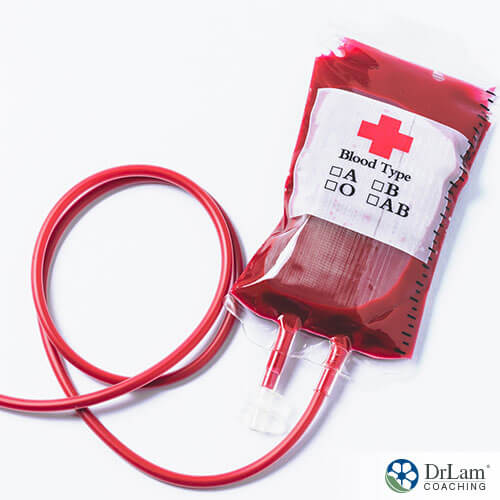 UV blood therapy, also called ultraviolet blood irradiation or blood irradiation therapy, used to be a very popular therapeutic method in the 1940s and 1950s used many different diseases, such as asthma, arthritis, tuberculosis, pneumonia, and other types of infections. When antibiotics and antivirals became more popular, this method took a back seat, especially in the US. But recently, there has been a re-emergence of interest in this therapy, especially due to the rise of antibiotic-resistant bacteria.
UV blood therapy, also called ultraviolet blood irradiation or blood irradiation therapy, used to be a very popular therapeutic method in the 1940s and 1950s used many different diseases, such as asthma, arthritis, tuberculosis, pneumonia, and other types of infections. When antibiotics and antivirals became more popular, this method took a back seat, especially in the US. But recently, there has been a re-emergence of interest in this therapy, especially due to the rise of antibiotic-resistant bacteria.
This article covers how UV blood therapy is done and its applications for different issues, with a focus on how it can support the Inflammation and Detoxification circuits of the NeuroEndoMetabolic (NEM) Stress Response. We’ll also cover its possible benefits and shortcomings.
UV blood therapy uses low-level UV light, which is usually a red laser light, to target the DNA of microorganisms in the blood. Once their DNA is damaged, they die off and can be eliminated from the system. Interestingly enough, the damage that occurs to the DNA of the host cells can be repaired by repair enzymes quickly enough.
Some natural medicine practitioners have also used this therapy to help decrease inflammation, boost the immune system, increase blood oxygenation, and support detoxification.
The process involves withdrawing around 40 mL (though the exact amount will depend on body weight) of blood from the arm. Then, the blood is run through a device that exposes this blood to UV rays, a form of photonic energy. After the exposure, the blood is returned to the patient through their veins. Different doses of light can be used, and the efficacy of the therapy heavily depends on matching the dosage with the needs and condition of the patient.
When your blood is exposed to UV light in a controlled setting, the main targets become the bacterial and viral cells that absorb the photonic energy, are killed, and then become a type of antigen, a substance that can evoke an immune response. Yet, because these cells have been killed, they can evoke that immune response, which is sometimes referred to as induced secondary immune reactivation, without being dangerous to the body in and of themselves. They become a type of “vaccine” that is self-generated.
When this blood returns to your system, this self-generated “vaccine” can help with the targeting and destruction of microbes still present.
This can be especially useful for people who have been struggling with chronic or recurring infections and stealth viruses that are not responding to the usual treatments such as EB virus and chronic Lyme. One small study found it helpful for reducing the hepatitis C virus. It can also be helpful for those that have imbalances in their gut flora due to taking too many antibiotics yet have not been able to get rid of their bacterial infections. This challenging situation sometimes occurs with chronic Lyme disease patients who were not given the right antibiotics in time and can’t shake off the disease completely, leading to a chronically high toxic-load.
Protecting the gut from substances that can create an imbalance in the microbiome is a worthy aim, as it can help prevent many health problems down the line. This is especially important for maintaining a healthy Inflammation circuit.
The NEM is your body’s global response to stress, and it’s composed of six circuits of organs and systems that work together to fight the harmful effects of stress. These six circuits are the Hormone, the Bioenergetics, the Neuroaffect, the Cardionomic, the Inflammation, and the Detoxification circuits. Each circuit is composed of three main components, and each circuit works synergistically with the components of all the other circuits.
For example, the adrenal glands are part of the Hormone circuit, and they produce your body’s main anti-stress hormone, cortisol. When your body faces stress, the adrenals are your first responders. But because they are part of the Hormone circuit, they trigger the engagement of not only the thyroid and gonads, which are the other two components of the Hormone circuit, but also the heart, lungs, central nervous system, gut, and many other components of the other circuits.
Many parts of your body acting together is how your body is capable of mounting a unified response to stress, such as the “fight or flight” response.
The Inflammation circuit, which we’ll focus on along with the Detoxification circuit, is composed of the gut, the microbiome, and the immune system. It goes into action when your body encounters some kind of invasion by toxins or pathogens, or when your body faces an injury. Its main job is to clear your system of dead and damaged cells, as well as the initial insult that killed or damaged the cells.
You need a properly functioning Detoxification circuit - which is made up of the liver, immune system, and interstitium (and the lungs and kidneys to a lesser degree) - so that the elimination of these toxins, pathogens, and dead and damaged cells is timely and efficient. Otherwise, these substances can accumulate in the system, clogging it up and increasing its toxic load.
Because the Inflammation circuit involves the gut and the microbiome, substances that can cause imbalances in the gut flora – a state called dysbiosis – can be detrimental to this circuit, as well as to the entire NEM. That’s why inflammation almost always begins in the gut, and then, if it becomes chronic, it can spread to other areas of the body.
If a therapy, like UV blood therapy, can lessen the burden on the gut and microbiome by killing off pathogens, boosting the immune system, and creating that secondary immune response without there being a need for course after course of antibiotics or other medications that can cause dysbiosis, then this can be a step in the right direction.
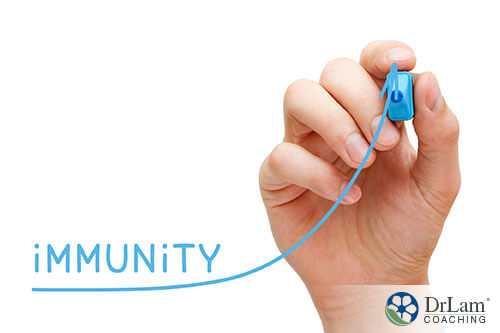 The immune response plays a role in both the Inflammation and Detoxification circuits, and its importance in keeping the body healthy and strong is obvious. A healthy immune system does its job quickly, with the least amount of energy expenditure, and allows the body to return to a state of rest and repair once it has done its job.
The immune response plays a role in both the Inflammation and Detoxification circuits, and its importance in keeping the body healthy and strong is obvious. A healthy immune system does its job quickly, with the least amount of energy expenditure, and allows the body to return to a state of rest and repair once it has done its job.
Unfortunately, many people have an immune system that is weakened or compromised in some way. Either due to facing chronic stress from recurring infections or a chronic disease, immunosuppressive drugs, an unhealthy diet and lifestyle, or the natural decline that comes with aging.
Therapies that boost the immune system rather than fight the disease or reduce the symptoms can be especially useful as part of a natural and holistic approach to health. UV blood therapy aims to do that. And it aims to do that in several different ways.
First of all, in in vitro studies, UV therapy was shown to change the function of leukocytes, or white blood cells, which are the immune cells that fight off foreign invaders and infectious agents. There are many different types of white blood cells, each with a specific function and target. For example, neutrophils target fungi and bacteria, natural killer cells attack tumors and viruses, and macrophages engulf and digest cell debris, pathogens, and cancer cells.
UV irradiation can help modulate helper cells, increase stimulator cells, block cytokine release, and reverse cytokine production. This is important because cytokines are proteins that help with cell signaling during an immune response and inflammation. Though they are necessary, if there are too many of them in the system it can make inflammation worse, which is what we want to try to avoid when dealing with chronic inflammation.
Chronic inflammation is one of the causes of many chronic diseases, and it is a huge stressor on the body. Inflammation can happen due to a number of reasons, such as recurring infections, the presence of stealth viruses that require constant immune suppression, eating an inflammatory diet, drinking alcohol, smoking, and being exposed to environmental toxins, among other factors.
If one part of your body is constantly inflamed, like your gut because you’re eating an inflammatory diet, that inflammation can spread and create problems in different areas, such as the central nervous system, the joints, the skin, and the cardiovascular system.
Your body sees this chronic and spreading inflammation as a big threat, a stress that must be handled, and neutralized if possible. This responsibility is given to your adrenal glands, which have to work extra hard to produce cortisol in order to deal with it. And, because the inflammation is chronic, your adrenals don’t get much rest. They have to keep producing more and more cortisol, until they dysregulate and you develop Adrenal Fatigue Syndrome (AFS).
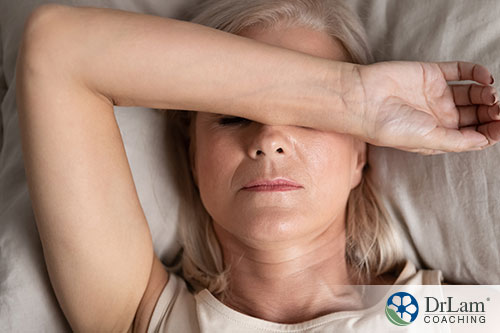 AFS is a very common condition that, in some estimates, affects over 80% of the adult population in the US at some point in their lives. It’s characterized by a collection of symptoms that may seem disconnected at first, until you understand how they all tie into the different circuits of the NEM.
AFS is a very common condition that, in some estimates, affects over 80% of the adult population in the US at some point in their lives. It’s characterized by a collection of symptoms that may seem disconnected at first, until you understand how they all tie into the different circuits of the NEM.
Symptoms of AFS include fatigue, insomnia, brain fog, easily gaining weight and difficulty losing it, anxiety, mild depression, food and drug sensitivities, gastrointestinal issues, hair loss, loss of libido, PMS, infertility, dry skin, hypoglycemia, heart palpitations, salt and sugar cravings, and lowered immunity.
The severity of the symptoms will depend on how advanced the AFS is, and which NEM circuits are most affected. For example, because we are focusing on the Inflammation and Detoxification circuits, when those are out of balance, you will get issues with food and drug sensitivities, since inflammation can increase your sensitivity, and slowed detoxification will allow the accumulation of metabolic byproducts in the system, causing even more sensitivity.
Because UV blood therapy can help with detoxing your system, it can be a very useful tool for those with slowed detoxification. With support and patience, you can have your Detoxification circuit running optimally again, allowing your body to eliminate toxins and metabolic byproducts that have been accumulating and clogging up your liver and the rest of your body.
As your system is cleared out, your sensitivities will eventually decrease, and you’ll also find symptoms of toxic load getting better. Inflammation will go down and many of the functions that were burdened with toxicity will operate normally again.
But this takes time, and also a lot of precautions. It really depends on how advanced your AFS is, and how clogged up your Detoxification circuit’s elements are. If your adrenals are exhausted and your condition is so debilitating that you can barely function, detoxing might actually add to the stress your body is already facing. As toxins and metabolic byproducts are loosened up and allowed to enter circulation in order to be eliminated, they may evoke more inflammation and immune responses, putting more pressure on your adrenals to deal with those stressors.
This is why it’s very important to only have UV blood therapy under the supervision of a health professional that is not only experienced in the therapy, but also in AFS, or whatever other chronic conditions you have. It may still be possible to get this therapy if the dose of UV light used matches your current needs and state of health.
The immunity issues that come with AFS are another problem that can be considered when thinking about UV blood therapy. The lowered immunity that many people with AFS experience can lead to frequent colds, flu, and infections, as well as slowed healing.
But, again, the efficacy of this therapy in improving immunity and supporting the body in fighting off pathogens and healing will depend on three things: your current state of health, your current needs, and getting the dose of UV light that matches them.
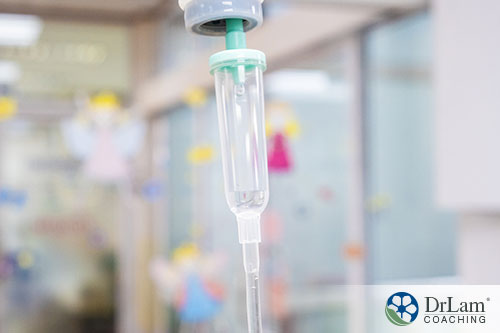 UV blood therapy has been purported to help with many non-specific issues, including those already mentioned, such as killing viruses and bacteria in the blood, boosting immunity, reducing inflammation, and supporting detoxification. Other non-specific issues it has been said to help with include:
UV blood therapy has been purported to help with many non-specific issues, including those already mentioned, such as killing viruses and bacteria in the blood, boosting immunity, reducing inflammation, and supporting detoxification. Other non-specific issues it has been said to help with include:
It can help clear out toxins accumulating in the system from microbes, plants, and animals, such as those that come from bee stings, bacterial infections, poison ivy, and even snake venom. It has also been reported to help with more specific issues or disease, such as:
As mentioned, one of the advantages of using UV blood therapy is that it gives the system a break from antibiotics, allowing the microbiome time to heal and rebalance. By avoiding antibiotics, it also doesn’t contribute to the development of resistant strains of bacteria.
But there are other benefits that may be good to consider when thinking about trying this modality. For example, it has fewer side-effects than many drugs, it works with the body’s immunity and natural defenses rather than replacing them, dosages can be easily adjusted, you can stop the treatment anytime with no risk (you don’t have to complete a full course if you don’t want to), and it’s relatively inexpensive.
Although UV blood therapy may seem harmless, there are certain precautions you need to be aware of if you’re planning on trying it out. You also need to know that, although this modality was developed in the US in the early 20th century, it became less and less accepted here after the 1950s. It is still popular in Russia and other Eastern countries, but the American mainstream medical community does not recognize it as a viable alternative to the established treatments for some of the issues addressed above.
Also, although it is a very safe modality, it still can have some side-effects, including the following:
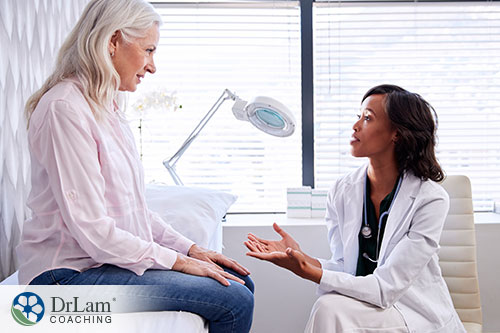 UV blood therapy is still controversial in the US, even though many practitioners and patients swear by its effectiveness, gentleness, and safety in other parts of the world. Its most important benefit may be that it works with your body’s own natural healing abilities, boosting their potency, rather than taking over your system and doing the job for you.
UV blood therapy is still controversial in the US, even though many practitioners and patients swear by its effectiveness, gentleness, and safety in other parts of the world. Its most important benefit may be that it works with your body’s own natural healing abilities, boosting their potency, rather than taking over your system and doing the job for you.
This allows the body to keep its own defenses sharp and to recover from the inside out, with minimal side-effects.
If you have adrenal fatigue, or any other chronic condition, you must make sure the practitioner that will administer this therapy is well-versed in that specific issue, because the dosage of the therapy is what will determine if the treatment is successful, useless, or harmful.
Another thing to keep in mind, not only with this therapeutic modality, but with any other modality, is that it does not replace the foundations that a proper diet and lifestyle lay for your health and recovery.
You cannot count on a few sessions to be rid of microbes or to have excellent immunity. You must eat healthily, get good quality sleep, reduce stress levels, do the right kind of exercise for you, drink plenty of water, and take appropriate supplements in order to achieve true health. All other therapies can act as a support to these fundamental changes.
© Copyright 2020 Michael Lam, M.D. All Rights Reserved.
Although UV blood therapy lost popularity in the US once vaccines and antibiotics came into widespread use, it may still offer you a safe and effective way to boost immunity, lower inflammation, and target microbes in your system. Read on to see if it’s suitable for your specific condition.
